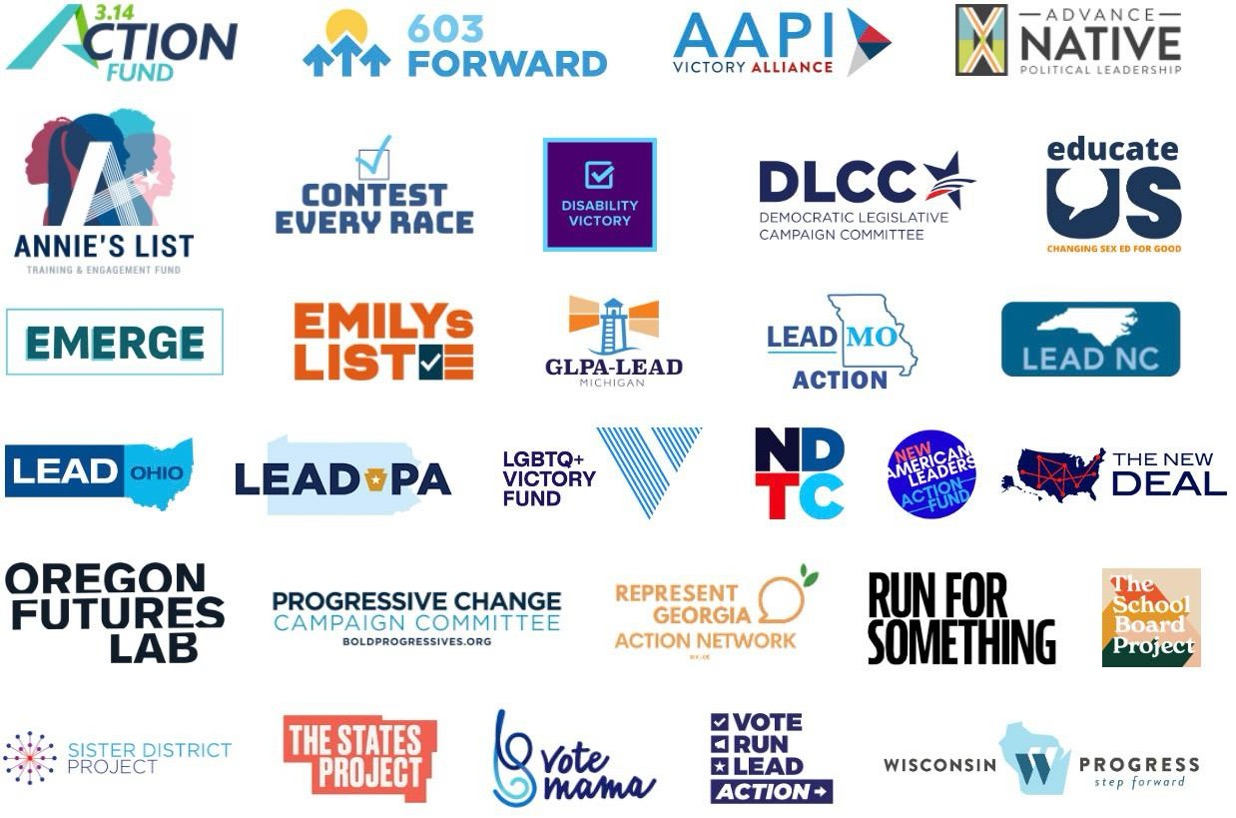Executive Summary: Survey of 2024 State & Local Candidates
PROJECT OVERVIEW
On behalf of the Pipeline Fund, Hart Research conducted an online survey among 906 progressive candidates who ran (primarily) for state and local office in 2024. The explicit objective of this research initiative was to understand and learn from the experiences of these candidates in order to strengthen and improve the resources and support available to future candidates.
KEY FINDINGS
- Recruitment remains vital to building a more diverse and representative pipeline. Over half (56%) of candidates say they were not really thinking of running for elected office until they were encouraged or recruited by others, and most of those candidates say they would not have run at all without that push. Women (63%), mothers of minor children (66%), and older candidates are the most likely to have needed encouragement before deciding to run. On the other hand, younger candidates are relatively more self-directed, and it is important that these candidates can easily find the information and resources that they will need to mount a successful campaign early on in the process.
- State and local party leaders are also key for fostering connections and accessing resources within the official party infrastructure. Our survey reveals a significant opportunity for these officials to engage more with candidates of color (40%) and those with union ties (41%), both groups of which were less likely than their counterparts overall (48%) to list state and local party leaders among those who encouraged them to run for office.
- Advocacy, creating a more reflective government, and enacting change in their communities were major motivations for candidates who ran in 2024. Although advocating for issues candidates cared most about was a top reason across types of elected office (65%), increasing representation in government to better reflect and support those previously underrepresented were also important issues among candidates of color (77%) and those with disabilities (75%). These motivations fueled many candidates and made them more determined to see their campaign through; despite a tough political climate and the struggles of running overall, significant proportions of respondents reported feeling “proud” and “inspired” during their campaigns.
- Education continues to be a top priority for nearly half (48%) of candidates, followed by housing, women’s rights and abortion, and economic development. Those who focused on education during their campaign, whether they ran for school board or not, advocated for funding and investment into public schools and opposed privatization.
- Candidates running for state legislature wanted to not only advocate for their issues, but also to block or limit harmful Republican agendas in their area. This goal is shared especially with those campaigning in the South and Midwest, who were more likely to be fighting for typically safe or leaning Republican seats. State legislative candidates additionally focused on women’s rights and abortion as key issues, more so than those running in other levels of office did.
- Third-party organizations provide crucial financial and strategic support and guidance for candidates, and it will be important to continue expanding and increasing awareness of key resources. Nearly half of candidates (49%) say they had only some, very little, or none of what they needed for their campaign last year, a proportion even higher among first-time candidates (58%) and candidates of color (57%). Candidates often have limited budgets with little to no staff (58% had zero paid staffers and another 15% only had one) and would appreciate not only timely information on campaign basics and infrastructure, but also experienced managers and staff to help them navigate the landscape.
- Support is unfortunately inconsistent across the board and levels of elected office, with one in three (34%) candidates receiving little or no resources from outside or third-party organizations, with those running at the municipal level particularly lacking
- One area where outside and third-party organizations help candidates is through providing trainings: 8 in 10 (79%) candidates who took our survey participated in at least one training, with first-time candidates and those running in state legislative races the most likely to do so. Of those who attended a training, 73% found the training to be very or fairly useful.
- Fundraising and volunteers are often the most urgent needs for many campaigns, and unfortunately only a minority of candidates reported receiving help in these areas. 62% of candidates valued help mobilizing volunteers, and only 37% received this support from third-party organizations (a 25-point difference); similarly, 55% needed assistance raising money from others, and only 23% received this support (a 32-point difference). These two areas are the biggest challenges for candidates across the board, especially for first-time candidates who were running for Republican-held seats. Candidates are grateful for the endorsements and direct contributions they receive from third-party organizations but are also eager for more support in finding new donor networks and opportunities. Newer, first-time candidates are also seeking a community of their peers to not only boost confidence and provide support emotionally, but also to connect with key resources and advice on campaign challenges.
- Finding and organizing volunteers are crucial for any candidate to help with outreach and continue momentum throughout the campaign, and outside organizations can provide both guidance in recruitment and in finding experienced organizers or field directors to most effectively utilize these volunteers. However, the tense political climate in many areas can also serve as a deterrent for would-be supporters, who may be wary of canvassing in certain neighborhoods or showing their support publicly.
- Personal demands are still present during a campaign, and many candidates found it difficult to maintain a sustainable balance. Even though many had either run previously or knew beforehand of the toll that vying for elected office would take, over half found juggling running for office with their personal (57%) or work lives (52%) challenging, with younger candidates struggling more than the overall numbers would suggest. Campaigning also seriously impacted candidates financially, with a quarter (26%) needing to take a pay cut or scale back or leave a paid position while others went into personal debt or delayed big purchases.
- An increasingly polarized political landscape presented major challenges for down-ballot candidates. Over two-thirds (68%) of candidates were impacted by the 2024 presidential race, with a majority of which (61%) were impacted in a negative way. Combined with the usual challenges of running a campaign, it is no wonder that candidates described their emotions this past year as “frustrated” and “stressed”, common feelings especially among younger candidates and women of color.
“When you say the word Democrat, it’s almost like saying you got the plague. I feel like that hindered me, probably more so than me being Black.” – School board candidate
- Harassment and intimidation have become commonplace for candidates on the campaign trail, with 6 in 10 reporting threats or harassment in some form. Younger women, immigrants (or first-generation Americans), and candidates with disabilities experience especially high rates of harassment, ranging from personal insults and disinformation to property damage. These candidates are targeted for many reasons, like their gender or racial identities, but the most common reason is simply their partisan identity. Continued intimidation can have consequences both now and in the future, with 4 in 10 (42%) candidates saying that harassment negatively affected their desire to run for office in the future.
- While social media is the most common medium for attacks for most candidates, one in three (35%) experienced it at some point in person, leading to them taking a multitude of defensive strategies, including avoiding campaigning on their own and installing home security measures.

-
- Only 22% of candidates who experienced harassment received training on how to handle harassment, and those who did say the most helpful advice they learned was to disengage and walk away. However, candidates are seeking more tactical and strategic guidance as well on how to handle online attacks and maintain personal safety effectively.
- Regardless of outcome and challenges, candidates gained valuable experience that will prepare them for either their new elected position or for another run. Out of those who lost, 4 in 10 (41%) say they would run in the future and half (50%) say they are confident they would have the support and resources necessary to launch another campaign. Both metrics are higher among younger and LGBTQ+ candidates, and candidates of color.
- Reflecting on their campaign, candidates most wished that they were more aware earlier of the difficulties around fundraising and donor fatigue. Candidates of color particularly struggled with fundraising, 70% of them identified fundraising to be a very or fairly big challenge, as well as 62% of LGBTQ+ candidates. Other challenges such as recruiting volunteers (67% of candidates of color), balancing running for office while holding another job (65% of candidates of color, 59% of LGBTQ+ candidates), and hiring and retaining campaign staff (48% of candidates of color) were very or fairly big challenges for all candidates, but candidates of color and LGBTQ+ candidates ranked them higher. Party leaders also have an opportunity here to offer increased coordinated institutional support for candidates at every level, especially those in more local races.
PROFILE OF CANDIDATES
The respondents for this survey reflect the lists provided to us by our diverse partner groups. A summary profile of their major demographic, political, and other characteristics is as follows:

These candidates encompass a diverse set of backgrounds:

They ran at various levels of state and local government:

They ran as various political parties/ideologies:

And they represent a variety of experiences and outcomes this cycle:

METHODOLOGY OVERVIEW
The sample (that is, the respondent pool) for the survey comes from the generosity of partner organizations (listed below) who shared lists of candidates they worked with during this cycle, as well as BallotReady.
Without their collaboration, this project would not have been possible, and we are grateful for their partnership. Because the survey sample reflects the respective missions of our partner groups, the findings here are not strictly representative of all progressive candidates running for local office across the country, but the data provides rich and valuable insights about candidates’ experiences to guide future efforts and programming. (Note that the data have accordingly not been weighted.)


